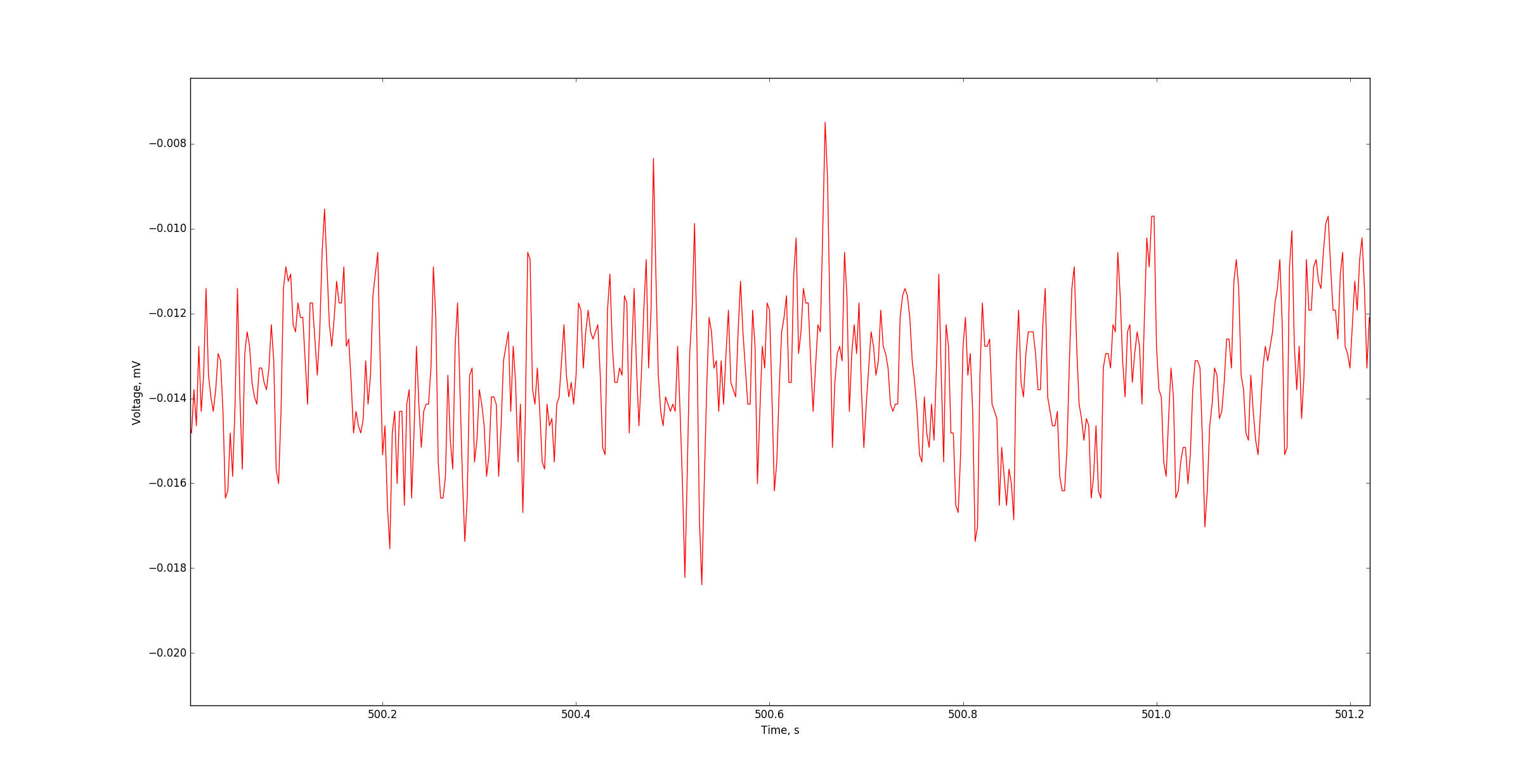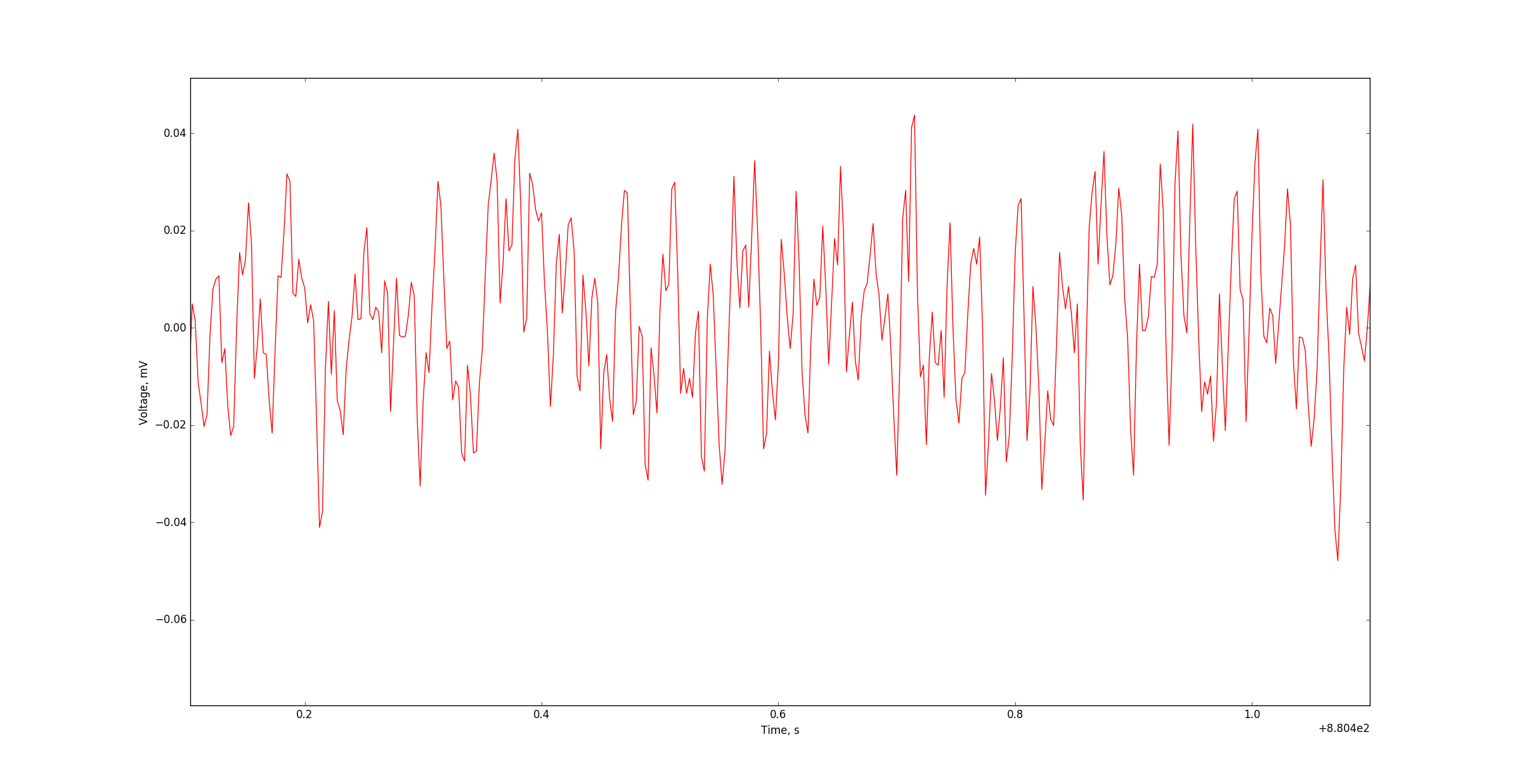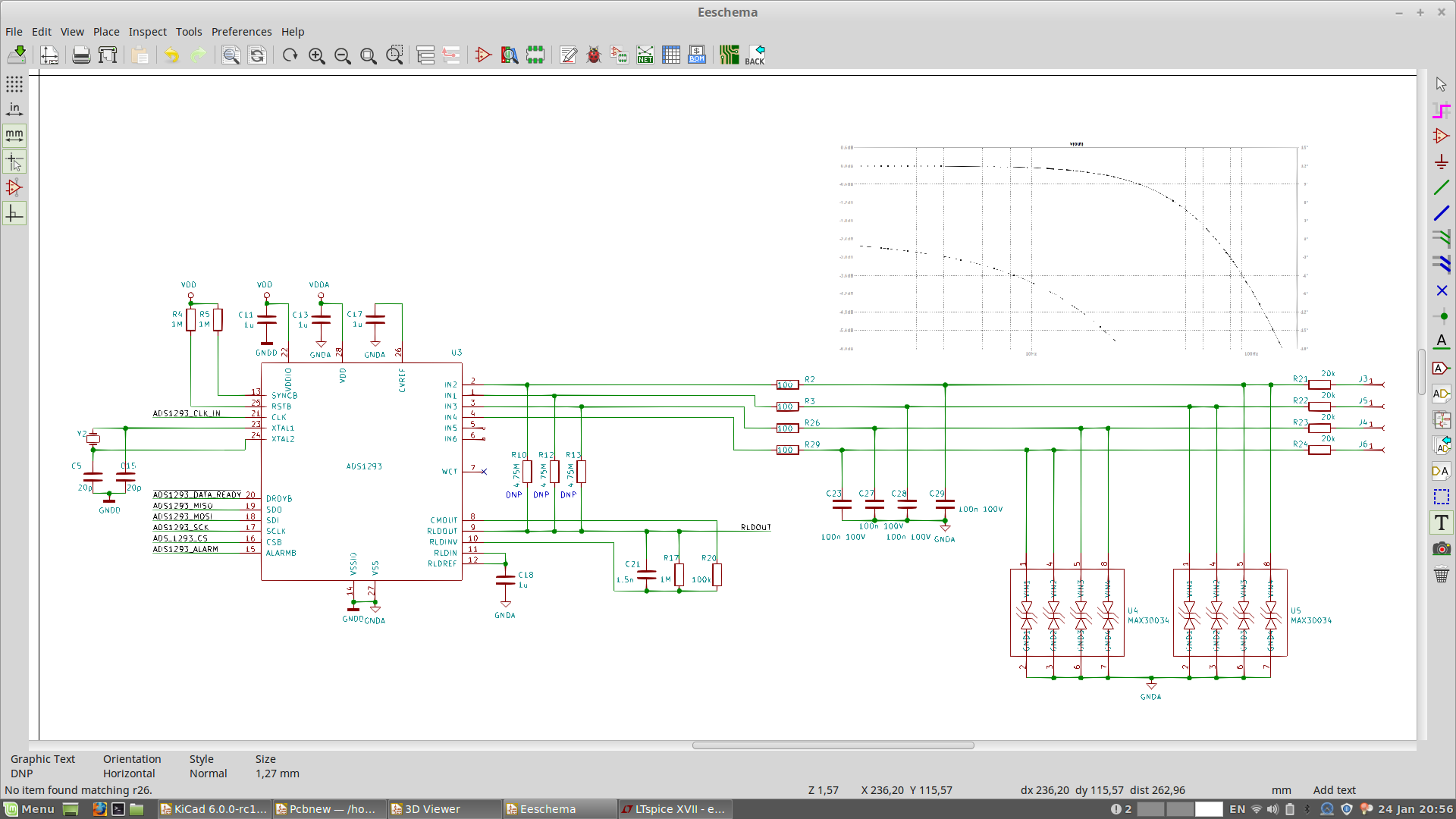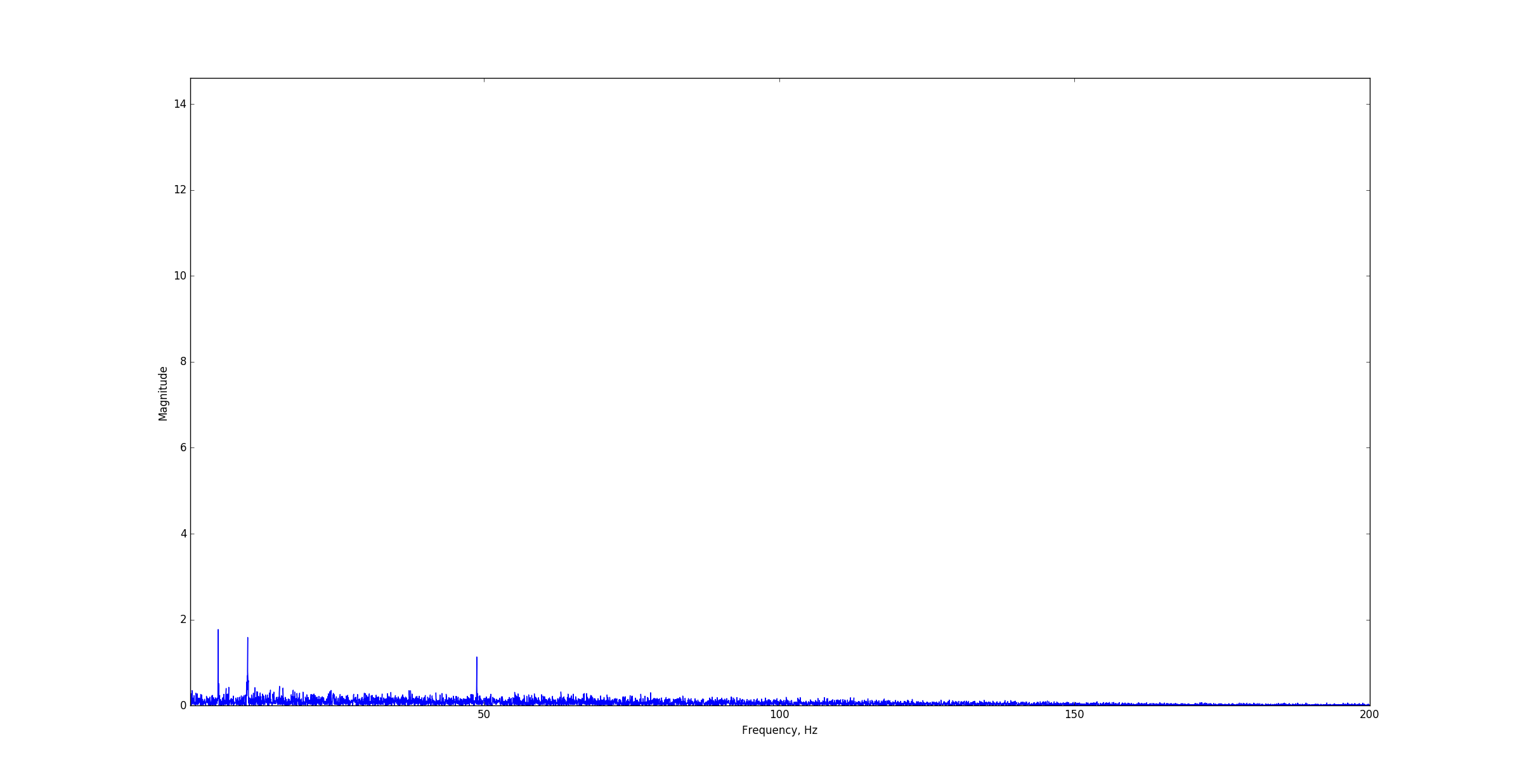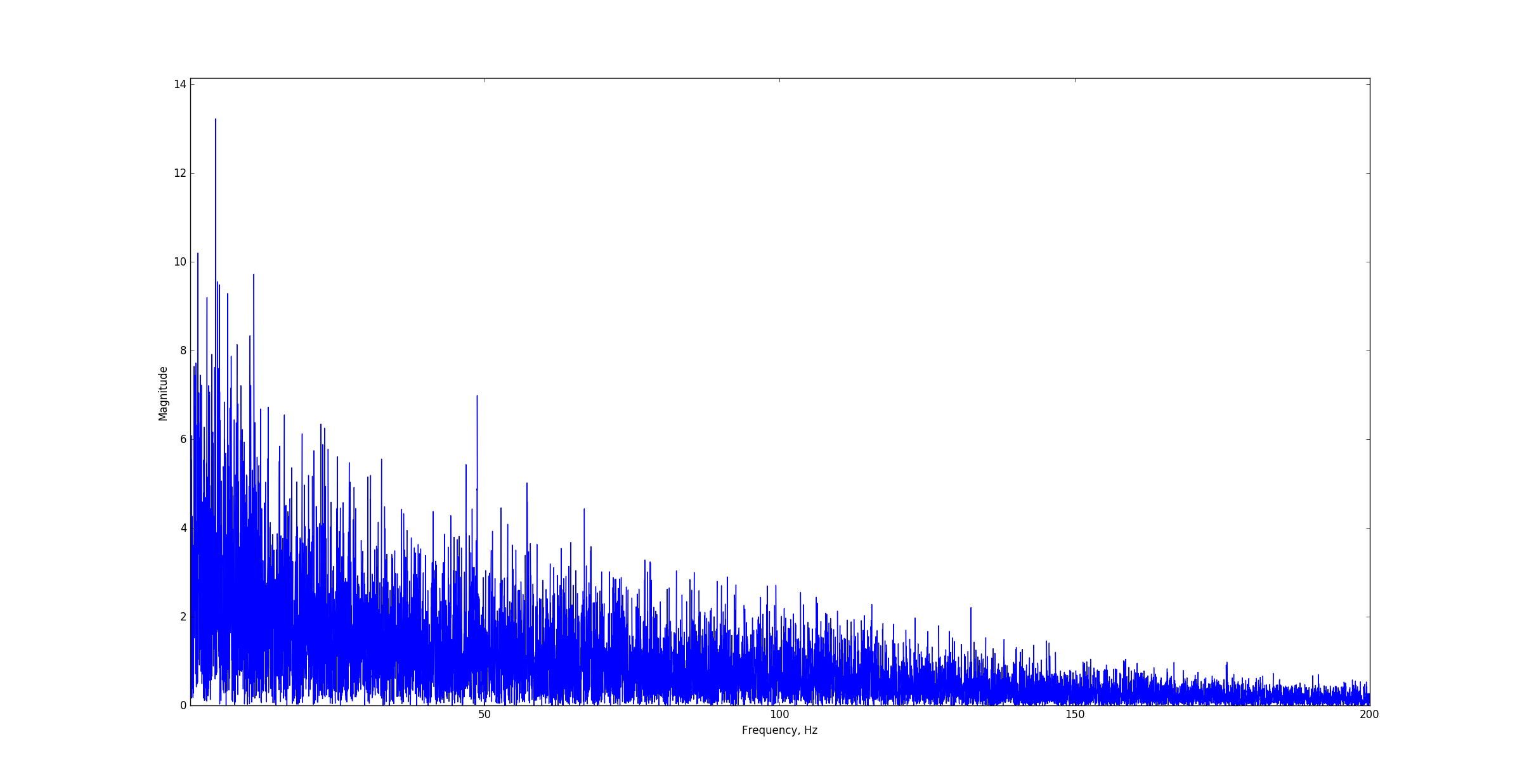Hi all,
I was performing a test according to standard 60601-2-47 chapter "201.12.4.4.106 System noise". I am using two inputs in my setup.
When I don't enable RLD, I get ~10uVp-p noise, but when I enable RLD on one of the two inputs, I get much larger noise - about 80uVp-p this is much bigger than 50uVp-p quoted in the standard. How come RLD injects so much noise? Can I avoid it? I am attaching all the related info I have.
System noise with RLD off:
System noise with RLD on:
Schematics:
ADS1293 config:
{FLEX_CH1_CN, 0b00011010}, //0x01 POS - IN3, NEG - IN2
{FLEX_CH2_CN, 0x00}, //0x02
{FLEX_CH3_CN, 0x00}, //0x03
{LOD_CN, 0b00001000}, //0x06 DC lead off detection - OFF
{LOD_EN, 0x02}, //0x07 lead off detection on IN2
{CMDET_EN, 0b00000000}, //0x0a CM detection - OFF
{RLD_CN, 0b01110011}, //0x0c high BW, high cap dirve RLD on IN3
{AFE_RES, 0x09}, //0x13 high res 200kHz for channel 1
{AFE_SHDN_CN, 0b00110110}, //0x14 insta and modulator shutdown for ch2 and ch3
{CH_CNFG, 0x00}, //0x2f
{R2_RATE, 0x01}, //0x21 R2=4
{R3_RATE_CH1, 0x40}, //0x22 R3=64 400 samples/s 80Hz BW ADCmax = 0x800000
{R3_RATE_CH2, 0x01}, //0x23
{R3_RATE_CH3, 0x01}, //0x24
{R1_RATE, 0x01}, //0x25 R1=2 double pace rate for CH1
{DRDYB_SRC, 0x08}, //0x27 ch1 as DRDYB source
{FLEX_PACE_CN, 0x00}, //0x04
{FLEX_VBAT_CN, 0x00}, //0x05
{LOD_CURRENT, 0x0f}, //0x08
{LOD_AC_CN, 0x00}, //0x09
{CMDET_CN, 0x00}, //0x0b
{WILSON_EN1, 0x00}, //0x0d
{WILSON_EN2, 0x00}, //0x0e
{WILSON_EN3, 0x00}, //0x0f
{WILSON_CN, 0x00}, //0x10
{REF_CN, 0x00}, //0x11
{OSC_CN, 0x06}, //0x12
{AFE_FAULT_CN, 0x06}, //0x15 disable fault detection for CH2 and CH3
{AFE_PACE_CN, 0x01}, //0x17 analog pace shutdown
{DIGO_STRENGTH, 0x00}, //0x1F
{DIS_EFILTER, 0x06}, //0x26 filter disabled for CH2 and CH3
{SYNCB_CN, 0x00}, //0x28
{MASK_DRDYB, 0x00}, //0x29
{MASK_ERR, 0xff}, //0x2a
{ALARM_FILTER, 0xFF}, //0x2e


